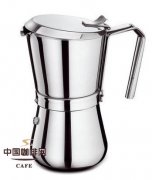The basic knowledge of fine coffee The impact of drinking coffee on health
First, because coffee contains caffeine, caffeine stimulates the cerebral cortex, eliminates drowsiness, increases feeling and thinking, and can be used as a cardiotonic agent to regulate heart function, as well as dilating kidney blood vessels and diuresis. However, caffeine is not just coffee. Usually a cup of coffee with 60-65mg caffeine. But excessive caffeine intake is prone to tinnitus and myocardial hyperactivity (the heart beats rapidly and the number of pulses increases). And the pulse is uneven, so you must drink the right amount of coffee.
Whether caffeine in coffee has a great influence or not varies from person to person. For example, some people are allergic to pollen, while others are not suitable for eating seafood. And these two situations will not have any effect on most people like you and me.
Second: what are the effects of drinking coffee on health?
What many people worry about is whether the caffeine in coffee has any effect on health. In fact, caffeine is a softer stimulant in coffee, it can improve the sensitivity and attention of the human body, accelerate the metabolism of the human body, and improve the mental state and physical fitness of the human body. At present, caffeine has been found in large plants, of which tea and coffee are best known. In some large coffee-consuming countries, people consume an average of 50-600 milligrams of caffeine a day. After repeated scientific research and analysis, this dose has no side effects on human body.
Three: no matter how much coffee you drink every day.
People often ask, how much coffee is too much? In some large coffee consuming countries, people consume an average of 5000 milligrams of caffeine a day. After repeated scientific research and analysis, this dose does not have any side effects on the human body. Because the caffeine content in a cup of coffee (150 ml) is generally: ground coffee: about 80-90 ml, instant coffee: about 60 ml.
In some large coffee-consuming countries, people consume an average of about 250-600 milligrams of caffeine a day. After repeated scientific research and analysis, this dose has no side effects on the human body. The caffeine content in a cup of instant coffee (about 150 milliliters) is generally about 60 milligrams, so drinking 4-10 cups of instant coffee a day is not excessive.
Important Notice :
前街咖啡 FrontStreet Coffee has moved to new addredd:
FrontStreet Coffee Address: 315,Donghua East Road,GuangZhou
Tel:020 38364473
- Prev

Coffee shop is the choice of black coffee pot.
There are three ways to make black coffee, so there are three different types of coffee pots: traditional follicle type, siphon type and electric type. The traditional follicle style is the most primitive and the simplest way to do it. The coffee pot is composed of a funnel, a piece of filter paper and a container below, but it requires high manual craftsmanship. If you handle it properly, you can make delicious coffee with a mellow taste. The price of this kind of pot
- Next

Can a mocha pot make coffee without filter paper?
The filter material of the mocha pot is divided into filter paper and filter cloth, and its main function is to filter out the coffee grounds so that the extracted coffee will not contain a lot of coffee grounds. If you do not use filter paper or filter cloth, a large number of coffee grounds will pour into the extracted coffee, affecting the quality of the extracted coffee, so the editor suggests that filter paper or filter cloth must be used to make coffee in the mocha pot.
Related
- Beginners will see the "Coffee pull flower" guide!
- What is the difference between ice blog purified milk and ordinary milk coffee?
- Why is the Philippines the largest producer of crops in Liberia?
- For coffee extraction, should the fine powder be retained?
- How does extracted espresso fill pressed powder? How much strength does it take to press the powder?
- How to make jasmine cold extract coffee? Is the jasmine + latte good?
- Will this little toy really make the coffee taste better? How does Lily Drip affect coffee extraction?
- Will the action of slapping the filter cup also affect coffee extraction?
- What's the difference between powder-to-water ratio and powder-to-liquid ratio?
- What is the Ethiopian local species? What does it have to do with Heirloom native species?

